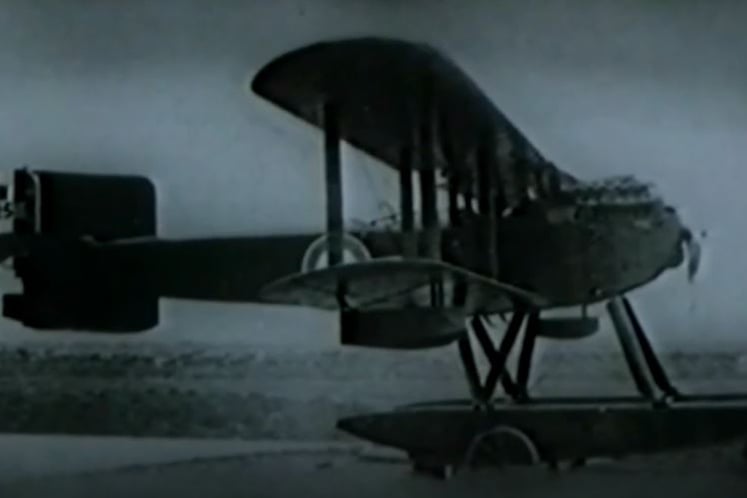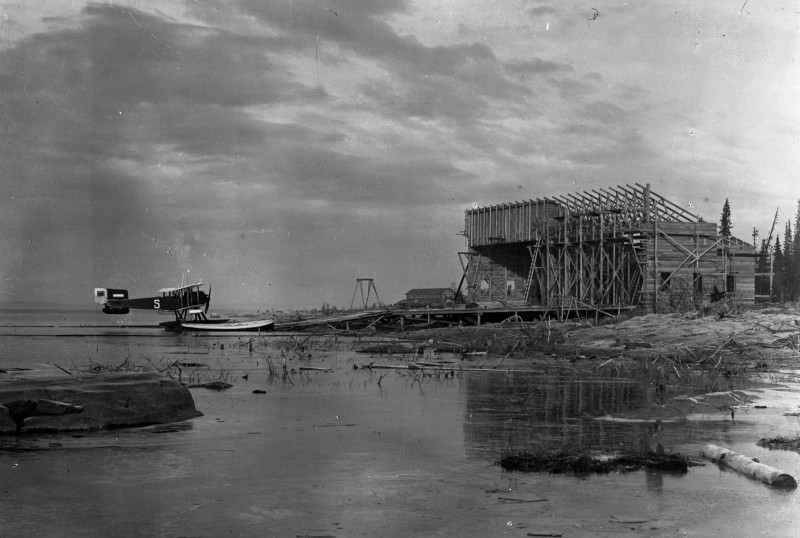
Flying pioneers
When the Suorva dam was to be constructed in the early 1920s, Vattenfall faced a delicate problem. For three years, a team of 400 men would have to live and work in the roadless Lapland wilderness. Completely cut off from the rest of the world. The solution became Sweden's first scheduled flight route and the first wireless telegraph in Sweden.
In 1915, the hydropower plant was inaugurated in Porjus on the Stora Lule river, north of the Arctic Circle. Four years later, exceptional work started on building a dam 100 kilometres north west of Porjus, at Suorva. In order to be able to complete the project, it was necessary to solve a critical problem – transport.
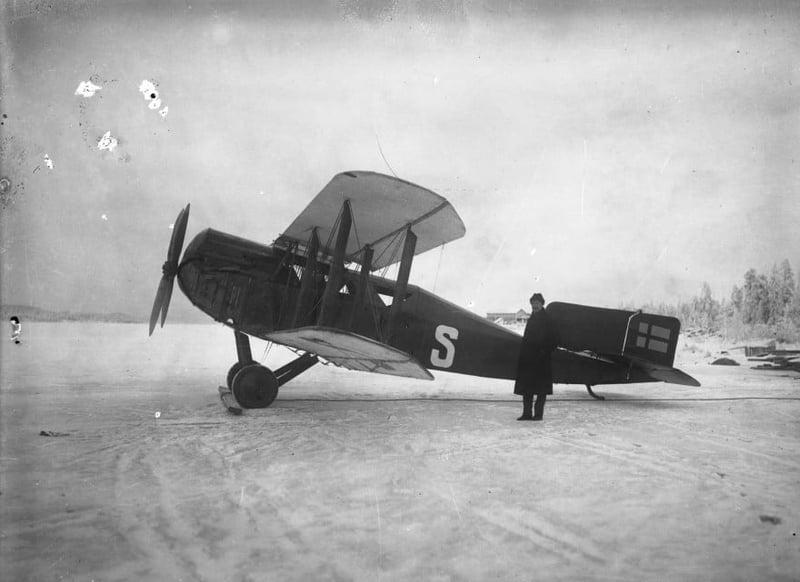
Flight route Porjus–Suorva Year: 1920 | ID: VF000074
The site of construction was not only remote and uninhabited – there were no roads and the climate was harsh in the mountainous region. During the short summer, you could travel between Porjus and Suorva by water, but you were then forced to drag the boat and load past all the streams and rapids along the route. In winter, you could transport material and people by sled over the ice. It still took at least two days to travel between Porjus and Suorva.
Vattenfall then took the far-sighted and bold decision to establish a flight route between Porjus and Suorva. It was the concern for the staff that formed the basis for this decision. Attempts to establish scheduled flights had been made before in Sweden, but not as far north and in such dreadful conditions. The weather in the mountains was difficult to predict, and in winter it could get down to 40 degrees below zero. Squalls, snow fog and ice formation all made the flights even more hazardous.
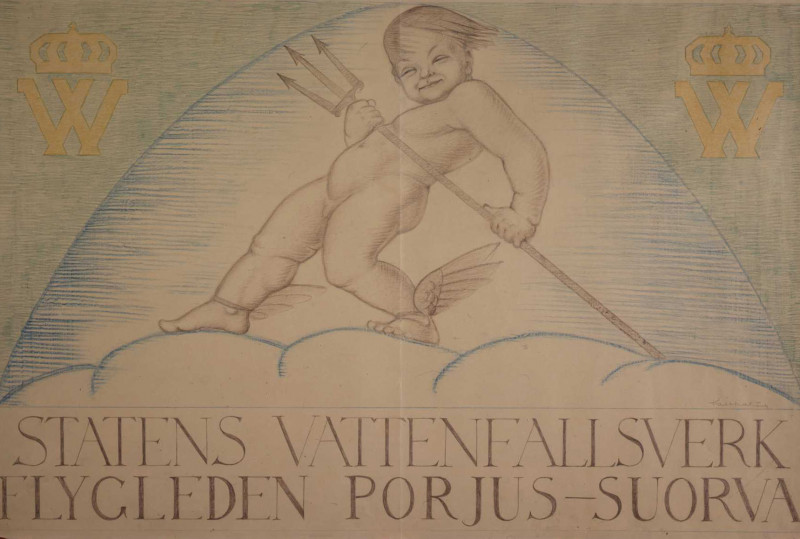
Logotype for Vattenfall's flight route between Porjus and Suorva Year: 1920 | Place: - | Creator: Vattenfall | ID: VF000073
A wireless telegraph link was also established between Porjus and Suorva for communication. During 1921, the largest number of wireless telegrams were dispatched from all telegraph stations in the country. Before each flight weather reports were also sent from the landing site. The telegraph station in Suorva was therefore equipped with all the necessary types of meteorological instruments.
To run the flight service, Vattenfall initially turned to company P.O. Flygkompani, who employed English pilot and wing commander L. P. G. Henderson and his plane. The first flight from Porjus to Suorva took place on 17 August 1920. It was soon clear that P.O. Flygkompani could not live up to their calculations. Vattenfall took over operation of the service in October.

Flight route Porjus–Suorva. The hangar in Porjus. Year: 1921 | Place: Porjus | Creator: Vattenfall | ID: VF000076
However, Henderson's plane did not survive the trials of winter. He soon left Porjus and was replaced by two pilots K. G. Hultström and A. R. Holmén. In 1921 three new Avro planes were purchased. The first went into service in March 1921, equipped with skis that were replaced by floats later in the year.
Heroic pilots
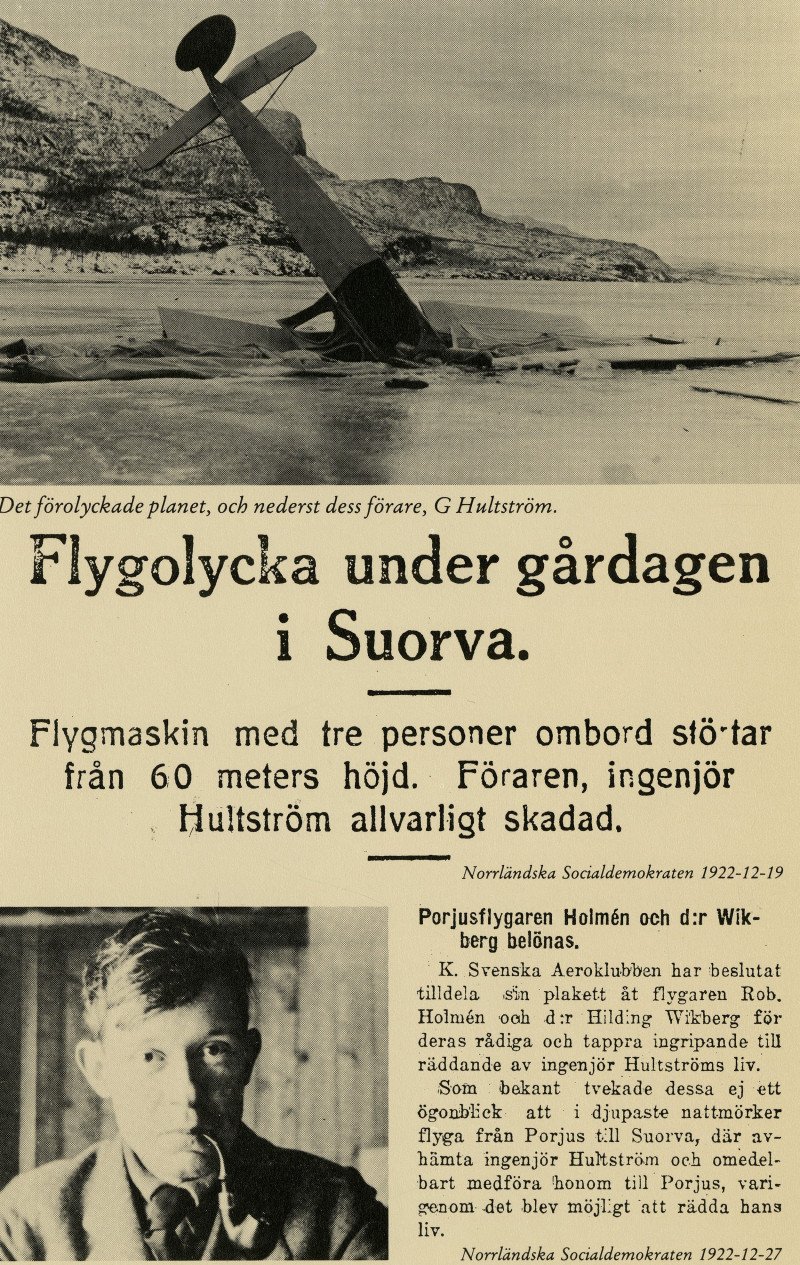
Newspaper article about a plane crash in Suorva. From the book 'Vattenfall på Vilhelm Hansens tid: Vattenfall 1909-28 - en krönika av Charlie Cederholm'. Year: 1983 | Place: Suorva | Creator: Okänd | ID: VF001035
Now operations had started in earnest, and in 1922 a more regular flight schedule was introduced. Flights were now only suspended during more extreme weather conditions. However, the year ended with an accident the week before Christmas. Pilot Hultström was to set off with works manager Hennel and photographer Borg as passengers. But the plane did not pick up enough speed at the start and crashed into the ice. Hennel and Borg were knocked unconscious and ended up half in the water, while Hultström ended up well below the ice. Everyone was saved, fortunately, but Hultström seriously injured his foot. Hultgren's pilot colleague Holmén undertook an amazing flight as part of the rescue effort. With a doctor on board, he took off in the pitch dark from Porjus. Two hours after the accident he landed successfully in Suorva and the injured were quickly able to receive treatment.
Dam construction was now in the final stages and in spring 1923 the flights were stopped. By that time, a total of almost 900 flights had been completed and more than 1,000 people and 16.5 tons of goods had been transported.
In addition to the flights, goods and people had also been transported by road. Even this involved an element of danger. One cold November day, when the ice was still unsafe, engineer Flemström was collecting the payroll cash from Porjus. It and various other items were to be transported by kick-sled. With only three kilometres to Suorva, the ice gave way and the whole rig disappeared through a hole. Flemström's travelling companion drowned. But Flemström had his sheath knife hanging outside his fur, and he was able to use it to hack into the ice so he could crawl his way out. Completely frozen, he still managed to get to the mess in Suorva and get help. The following day they also managed to retrieve the cashbox and an alcohol package and a long-awaited goose intended for the St. Martin's Day celebrations.
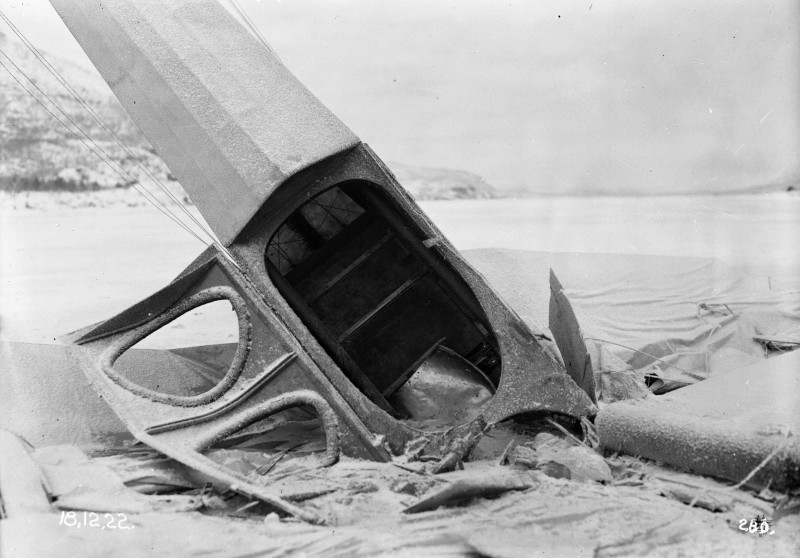
A plane has crashed through the ice in Suorva. Year: 1922 | Place: - | Creator: Vattenfall | ID: VF000078
Video player requires marketing cookies.
To view this content please click here to allow marketing cookies.
One of the world's first air-lines (in Swedish)

